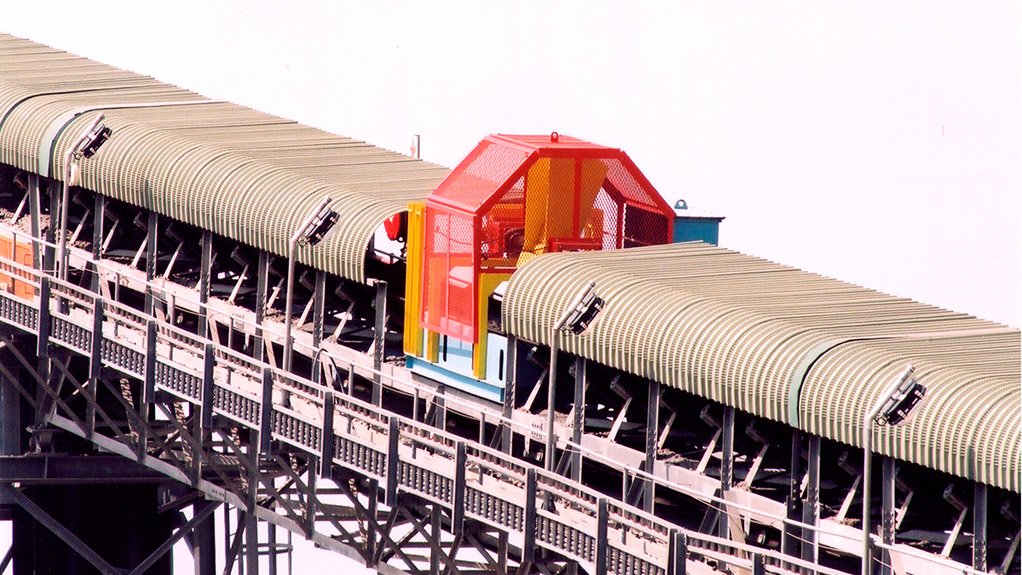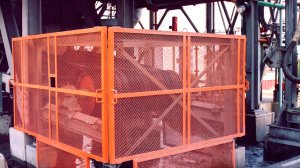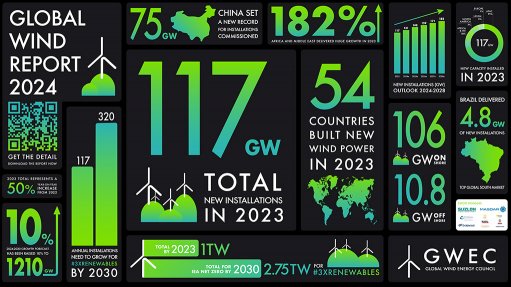Expanded Metal Remains An Economical And Cost Effective Material
This article has been supplied as a media statement and is not written by Creamer Media. It may be available only for a limited time on this website.
Durable, dependable and incredibly versatile, Mentis Expanded Metal continues to be an economical and cost effective material. The manufacturing process ensures optimum material integrity and strength and allows it to be used for a wide range of applications.
Elaine van Rooyen, marketing manager at Andrew Mentis, one of the country’s foremost engineering and manufacturing companies based in Elandsfontein, explains that the material is made by slitting and expanding a solid sheet of metal into a web of diamonds.
“The metal sheet can, in fact, be expanded up to ten times its original size, losing no material in the process and resulting in a remarkably light mesh,” she says. “And expanded metal offers flexibility because it is available in a variety of sizes and materials.”
One of the most important features of expanded metal is its inherent structural integrity and strength. Van Rooyen says this facilitated by the network of rigid strands which also permit light and air to pass freely through it. The material is also lighter than the original equivalent mass.
High quality local mild steel is used in the manufacturing process, but any other ductile metal is also suitable. The finished product can be painted, stove-enamelled, plated and galvanised. The company produces expanded metal with a raised mesh, known as Mentex, and with a flattened surface, known as Flatex. Van Rooyen says that the most appropriate type of expanded metal is selected depending on the application ion which the material will be used.
The range of mesh sizes and thicknesses of both Mentex and Flatex is extensive and the expanded metal can be bent, shaped to radii, angled or notched. Customers can select a broad spectrum of mesh sizes, from the smallest mini-meshes with openings of 2 mm by 4 mm and a thickness of 0,3 millimetres to the larger versions with openings of 75 mm by 200 mm and a thickness of 6 mm.
Comments
Press Office
Announcements
What's On
Subscribe to improve your user experience...
Option 1 (equivalent of R125 a month):
Receive a weekly copy of Creamer Media's Engineering News & Mining Weekly magazine
(print copy for those in South Africa and e-magazine for those outside of South Africa)
Receive daily email newsletters
Access to full search results
Access archive of magazine back copies
Access to Projects in Progress
Access to ONE Research Report of your choice in PDF format
Option 2 (equivalent of R375 a month):
All benefits from Option 1
PLUS
Access to Creamer Media's Research Channel Africa for ALL Research Reports, in PDF format, on various industrial and mining sectors
including Electricity; Water; Energy Transition; Hydrogen; Roads, Rail and Ports; Coal; Gold; Platinum; Battery Metals; etc.
Already a subscriber?
Forgotten your password?
Receive weekly copy of Creamer Media's Engineering News & Mining Weekly magazine (print copy for those in South Africa and e-magazine for those outside of South Africa)
➕
Recieve daily email newsletters
➕
Access to full search results
➕
Access archive of magazine back copies
➕
Access to Projects in Progress
➕
Access to ONE Research Report of your choice in PDF format
RESEARCH CHANNEL AFRICA
R4500 (equivalent of R375 a month)
SUBSCRIBEAll benefits from Option 1
➕
Access to Creamer Media's Research Channel Africa for ALL Research Reports on various industrial and mining sectors, in PDF format, including on:
Electricity
➕
Water
➕
Energy Transition
➕
Hydrogen
➕
Roads, Rail and Ports
➕
Coal
➕
Gold
➕
Platinum
➕
Battery Metals
➕
etc.
Receive all benefits from Option 1 or Option 2 delivered to numerous people at your company
➕
Multiple User names and Passwords for simultaneous log-ins
➕
Intranet integration access to all in your organisation






















